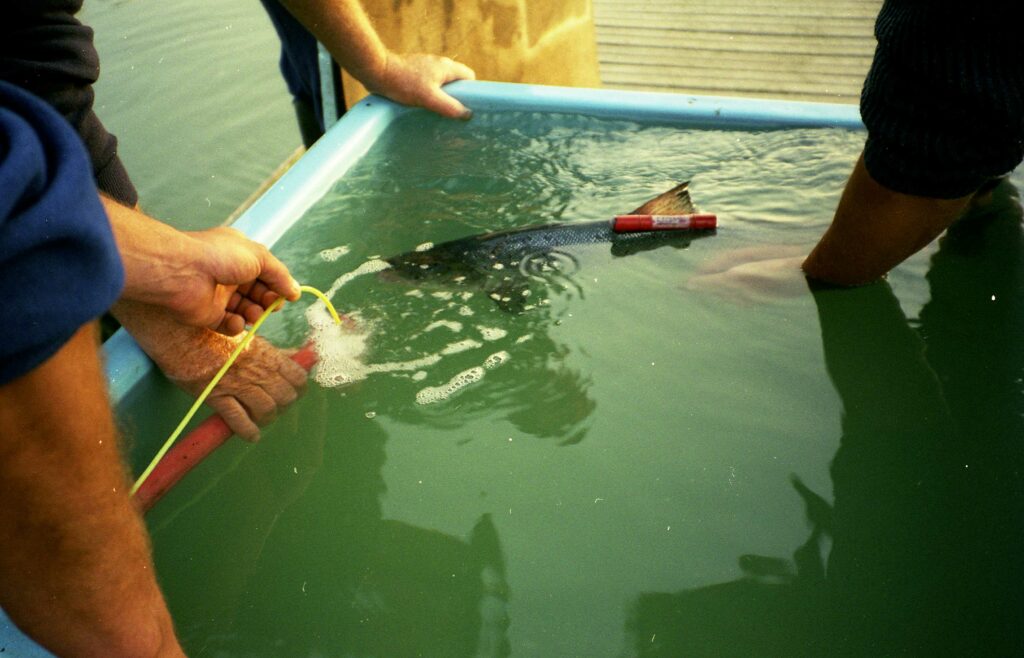All the fishing companies operating in the Adour basin, in both sea and river areas, have joined AFPMAR. Our treasurer Olivier Jeannots reports that 54 fishing companies have joined our association.
This community of fishermen has just been hit hard by the closure of salmon fishing on the estuary, following a decision by the administrative court in response to a request from the “Défense des Milieux Aquatiques” association.
In partnership with scientists from Ifremer, Inra and CNRS, these communities of professional fishermen had set up a project to study the behaviour of salmon as they make their way up the estuary, one of the most important in Europe. Since 1995, the salmon population has been precisely managed, with exploitation rates estimated under the supervision of the Comité de Gestion des Poissons Migrateurs du Bassin de l’Adour et des Gaves.
The observed decline in returns, which seems to be general to the entire Atlantic coast (recreational fishing has been closed in Brittany), led professional fishermen to voluntarily stop fishing during the last season.
It now remains to be seen what the reasons are for such a general decline in these populations across their entire range. According to the Office Français de la Biodiversité, river modifications and genetic pollution are to blame. In short, once again it’s the fishermen who are paying the price, despite the many warnings they have issued over the years.
Perhaps the administrative court will confirm this, since it now seems that, under pressure from so-called environmentalists, management of the species is being handled in the courtroom.
A sad drift towards a “luxury ecology” defended by people who only see the problem through the small end of the spyglass, and are contributing to the disappearance of heritage activities that make our terroirs so rich, without in any way helping to defend the environment.
